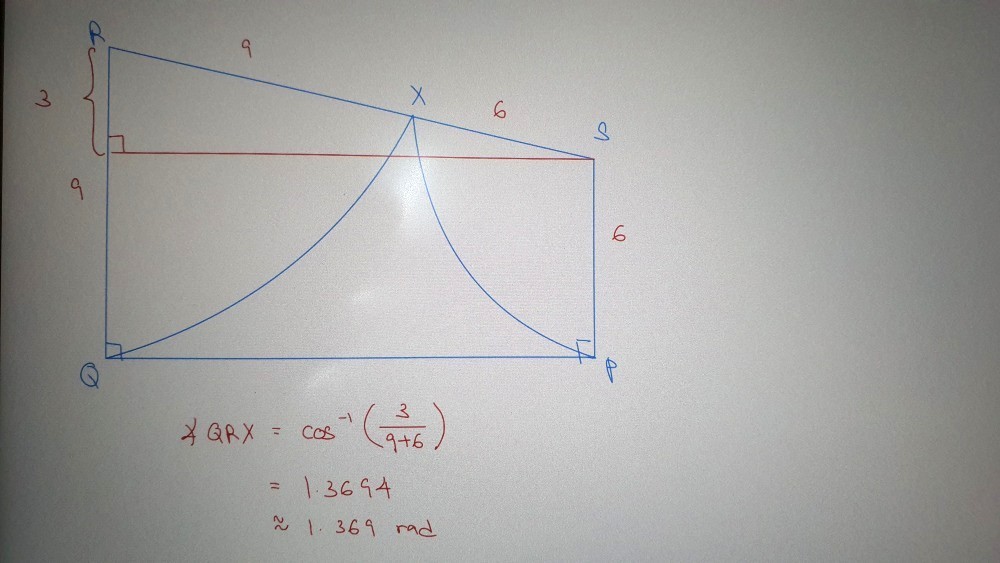Ask Singapore Homework?
Upload a photo of a Singapore homework and someone will email you the solution for free.

Question
secondary 4 | E Maths
One Answer Below
Anyone can contribute an answer, even non-tutors.

Pls help with this qn espescially part a I’m confused
Thank u!
To convert an angle from degree to radian, we multiply the relevant angle in degrees by π and then dividing the result by 180° to obtain the angle in radians. Alternatively, you can use an in-built function in your scientific calculator if you have one - most scientific calculators should have this feature.
You are only given two values (the radii of the circles). How will you be able to find the angle?
Now, it's not immediately obvious how these values relate to the shape. However, if we draw just this one horizontal line to the diagram, the problem will be much simpler.
Try drawing a horizontal line, parallel to QP, starting from S and going towards the left such that it strikes line RQ at right angles. Let's call this point Y.
Now that you have drawn this line SY, you can look at the diagram again.
If you notice the original diagram carefully, QY = SP = 6 cm because of what we drew previously. But then, QR = 9 cm, That means...
What does it mean? YR is equal to...
...9 cm - 6 cm = 3 cm.
How about RS, which is essentially the combination of the two radii?
That's 9 cm + 6 cm = 15 cm.
That's all we need to find the angle. Not by accurate construction, of course, Do you recall trigonometry relating to acute angles?
For angle YRS, length YR is its adjacent side while length RS is its hypotenuse side. And recall that the cosine of an angle is the ratio of the adjacent side of a triangle to the hypotenuse side of the same triangle.
So,
cos YRS = 3/15 = 1/5
cos QRS = 1/5
QRS = inverse cosine of 1/5 (sometimes written as cos-1 1/5 or arccos 1/5)
QRS = 1.369438406 radians
QRS ~ 1.369 radians
as required. Remember to do this in radian mode, or else you will obtain the other value 78.46304097 degrees, though this is still convertible to the radian form by multiplying the result by π/180°.
I will let you attempt parts bi and bii on your own unless you require help.
See 1 Answer





